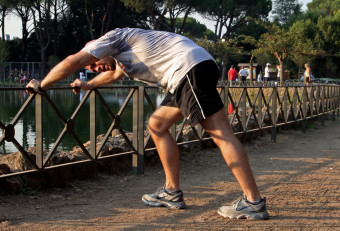The shoulder is the most mobile joint in the body and also the most versatile. It is a complex ball and socket joint made up of the shoulder blade, the arm bone and the collar bone. There are plenty of muscles and ligaments that help move and support the shoulder. Even then, the shoulder joint is very prone to injury especially due to its complexity.
Causes of Shoulder Pain
There are many different reasons why people suffer from shoulder pain. They include things such as poor posture, traumatic events such as a car accident or a fall and activities such as swimming or even lifting.
When a shoulder injury occurs, it should be treated immediately. An ice pack can be used to reduce the swelling and prevent inflammation. If shoulder pain lasts 2 to 3 weeks, then the patient should seek medical advice and can contact a doctor for medical evaluation and a physical therapist.
How Physical Therapy Can Help
Physical therapists are trained to handle any issues related to movement and mobility. By definition, a physical therapist is a highly trained and licensed healthcare expert who assists patients reduce pain and regain or improve mobility.
When a patient first complains of shoulder pain, the physical therapist will evaluate the he or she in order to determine exactly what caused the onset of the pain. The therapist will then evaluate the individual’s posture and observe how a they walk, stand and move around. These observations, evaluations and tests will enable them to make a determination of what the problem is and what is the best form of treatment.
1. Pain Management
The worst part about a shoulder injury is the pain. It can completely immobilize the victim and disable them from using their entire arm. A physical therapist is able to provide pain relief by using various pain management techniques. With the pain being minimized, it becomes easier to work on the muscles and tendons with the hope of restoring mobility.
2. Restore Strength
It is important that once the shoulder starts to heal and recover, that strength training becomes part of the rehabilitation process. The rehabilitation process is comprised of several components including simple exercises and workouts that help rebuild and restore muscle and function of the shoulder. An experienced physical therapist will be able to determine the types of exercises that are best for restoring strength.
3. Improve Range of Motion
When the shoulder is injured, its range of motion often becomes limited. It becomes almost impossible to move the arm from left to right, up and down or from side to side. However, overtime, regular therapy sessions and rehab will enable the range of motions to increase substantially.
4. Restore over Function to the Shoulder
Not being able to have full use of a shoulder and/or entire arm can take quite a toll on anyone. As the injury heals and the shoulder starts to feel better, the physical therapist will train the patient to perform a wide range of functions using proper shoulder mechanics. This kind of training and rehab will ensure that function is eventually restored.


